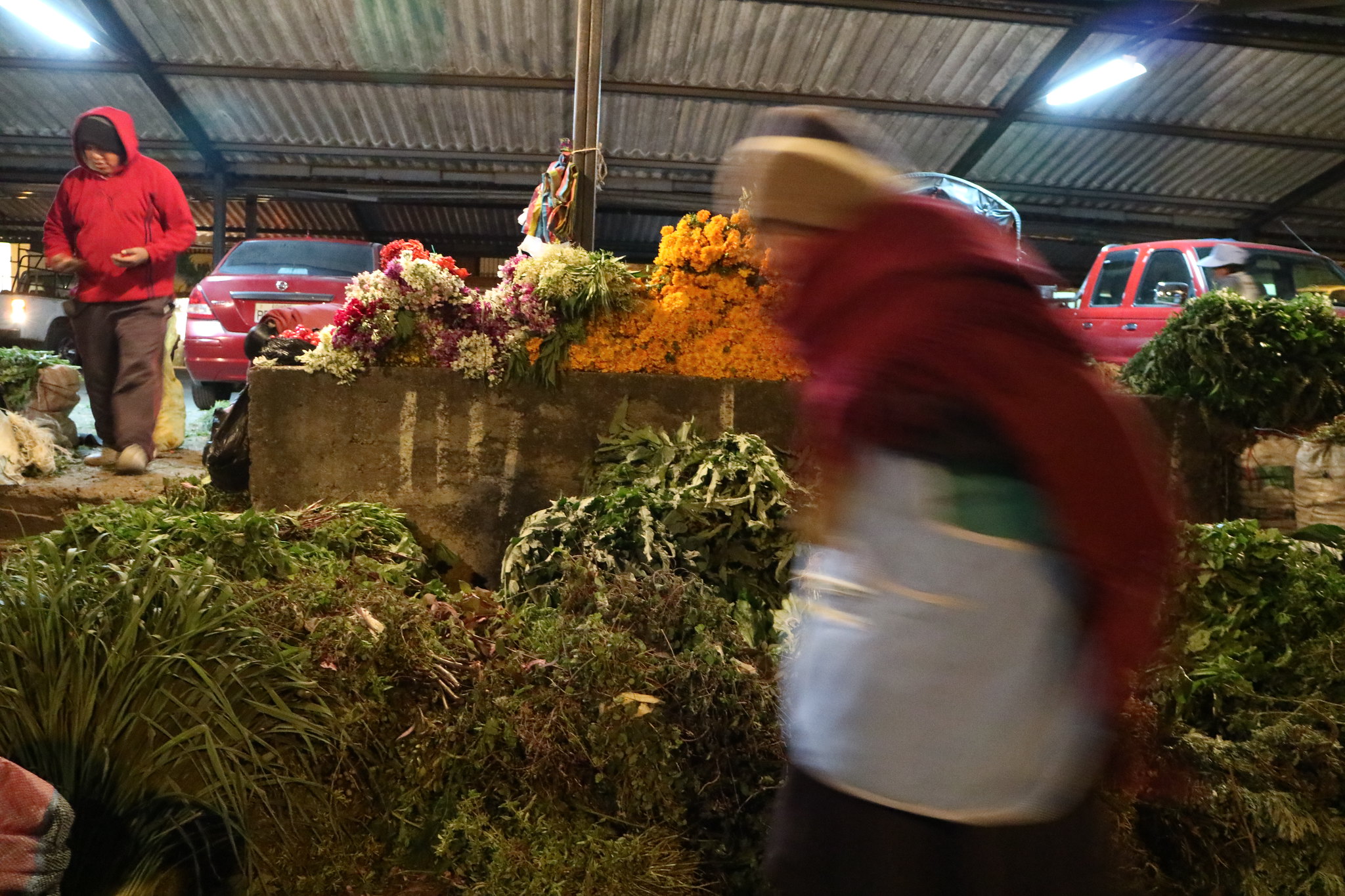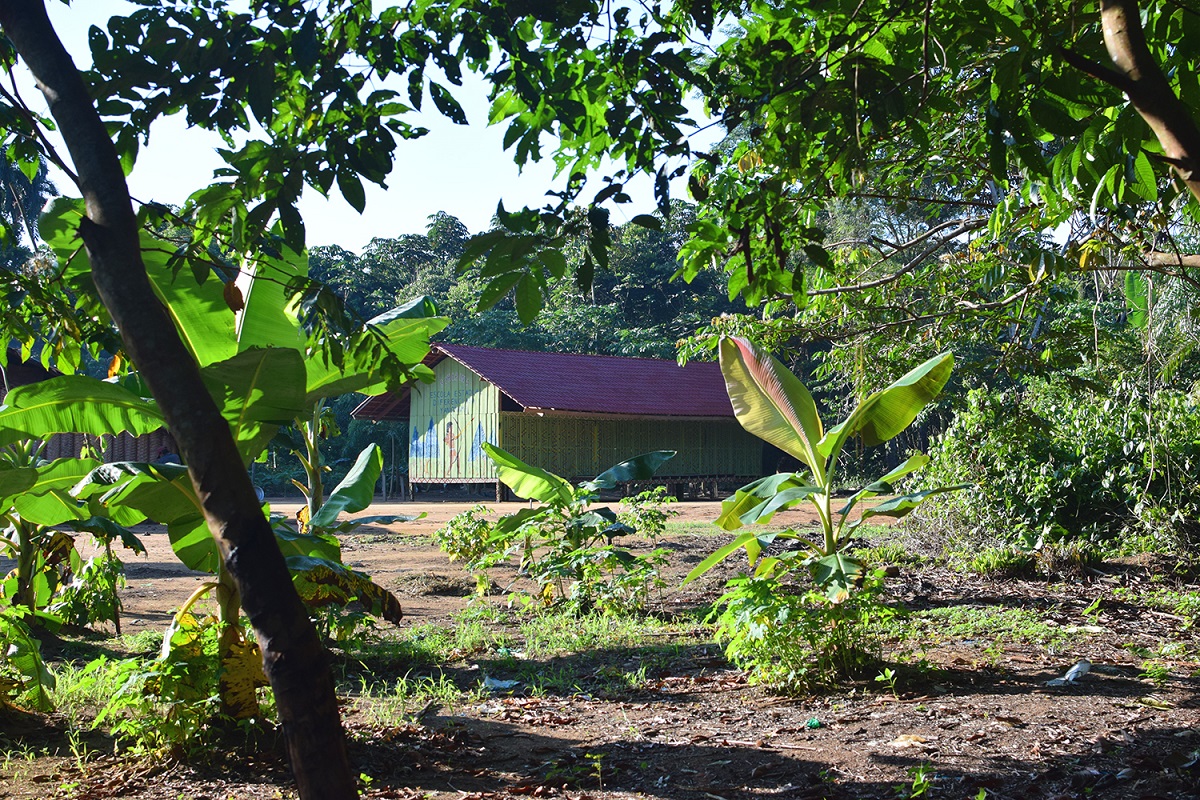Between Amazonian Worlds: Memory as an Insurgent Practice in the Tapajós River
03/21/2024
Education and pedagogy then become places that cultivate that vulnerability and collective openness as starting points for putting thought into a state of rebellion, that is, as starting points for pedagogy to transform into emancipatory practice.
The samauma (Ceiba samauma) is a tree that reaches impressive heights, towering above the canopies of other trees and serving as a point of reference for navigating the Amazonian rivers, like the stars for ships at sea. They are grandmother trees that gather a great diversity of life forms, hosting many worlds around their roots, connecting river and jungle, visible and invisible. I like to think of samaumas as coordination points for interdependent life in the Amazon rainforest, places of connection and transit that organize the slow and laborious construction of an agreement of voices among different bodies, rhythms, languages, and ways of life.1
To reach the samaúma of the Santo Amaro village, in the Tupinambá territory of the lower Tapajós (Pará, Brazil), one must pass the church, the soccer field, and walk a few more minutes along a path towards its gigantic roots. During the youth gathering of the Tupinambá, which I was able to accompany in September 2022, we were often at the feet of the samaúma. Whether to open the work or to close the day, she participated by marking the transits and times of the encounter. Under its leaves, the different ancestral pasts and futures of the territory connected, turning her into a place of learning, where listening, speaking, singing, dancing, and the rituals of indigenous youth of the encounter took place.
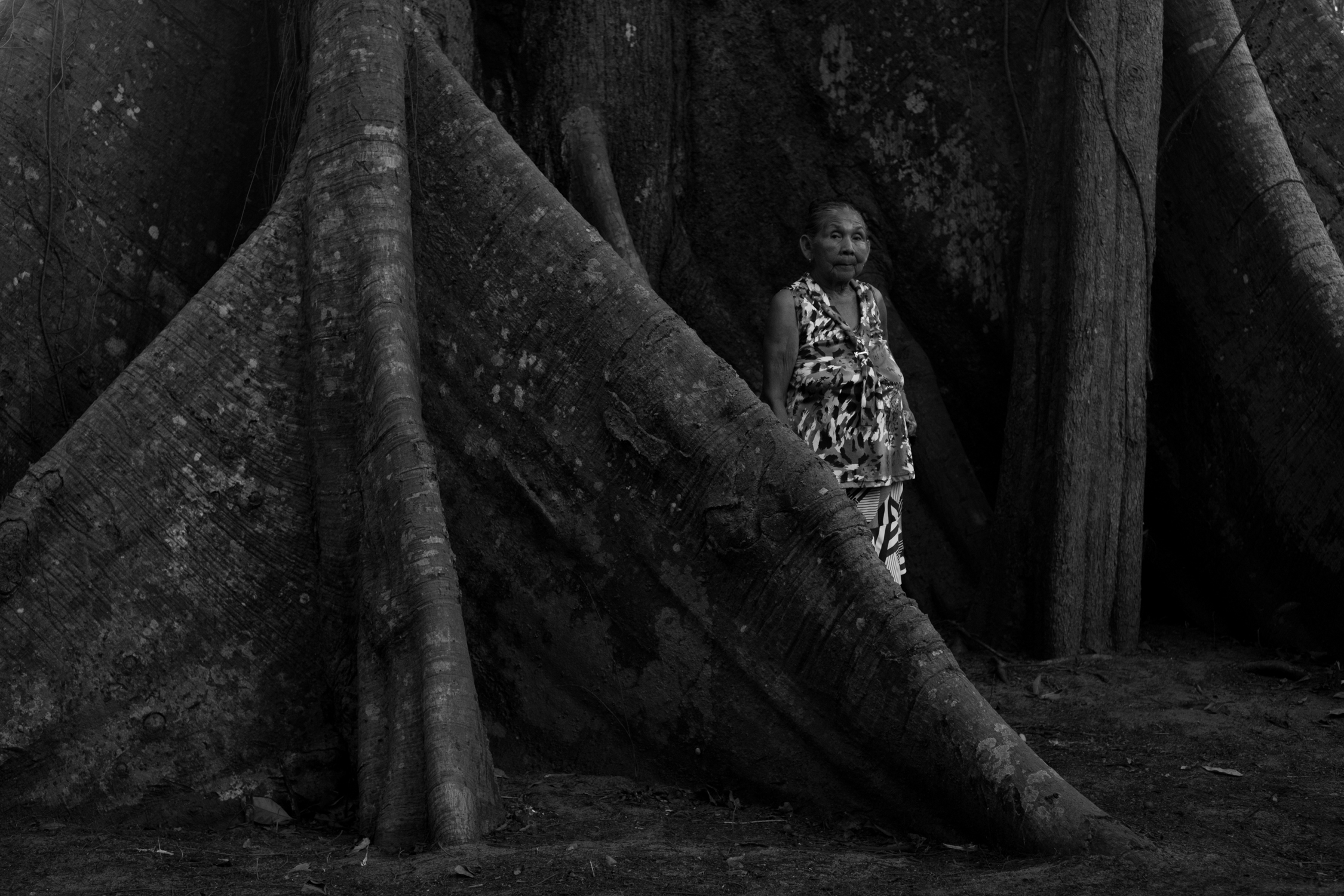
Portrait amidst the roots of the samauma.
Courtesy: Alice Lima Nin (2022)
The samauma became a place and subject of political formation, teaching about the interdependence in the territory from the complexity of the reproduction of life in common that happens among its roots. It showed us that the territory is embodied through journeys and stays that, among diverse bodies, human and more-than-human, coordinate ensuring life.
There, the beaches and trees serve as seminar spaces for youth defending their territories, but also as home for other animals and plants that pass by and meet. Thus, the jungle and the river, the crops of family agriculture and the plants in the backyard become learning places that guide the struggle for the commons in the Tapajós.2
The Tapajós basin is an ecological transition zone that connects the Amazon valley with the Brazilian Central Plateau,3 and currently it is a strategic frontier for the expansion of Brazilian extractive activities. Among the extractive fronts that threaten the region are the large garimpos,4 which pollute the river with mercury, mining, illegal logging, agribusiness latifundia, deforestation, large infrastructure projects such as hydroelectric plants, waterways, and railways, among others, shaping a scenario of overlapping conflicts over ways of life in the region. There is an extensive tradition of struggle in defense of life along the Tapajós River, and an important part of that struggle crosses popular education and its pedagogies: one learns to live by the river and learns that this life is political.
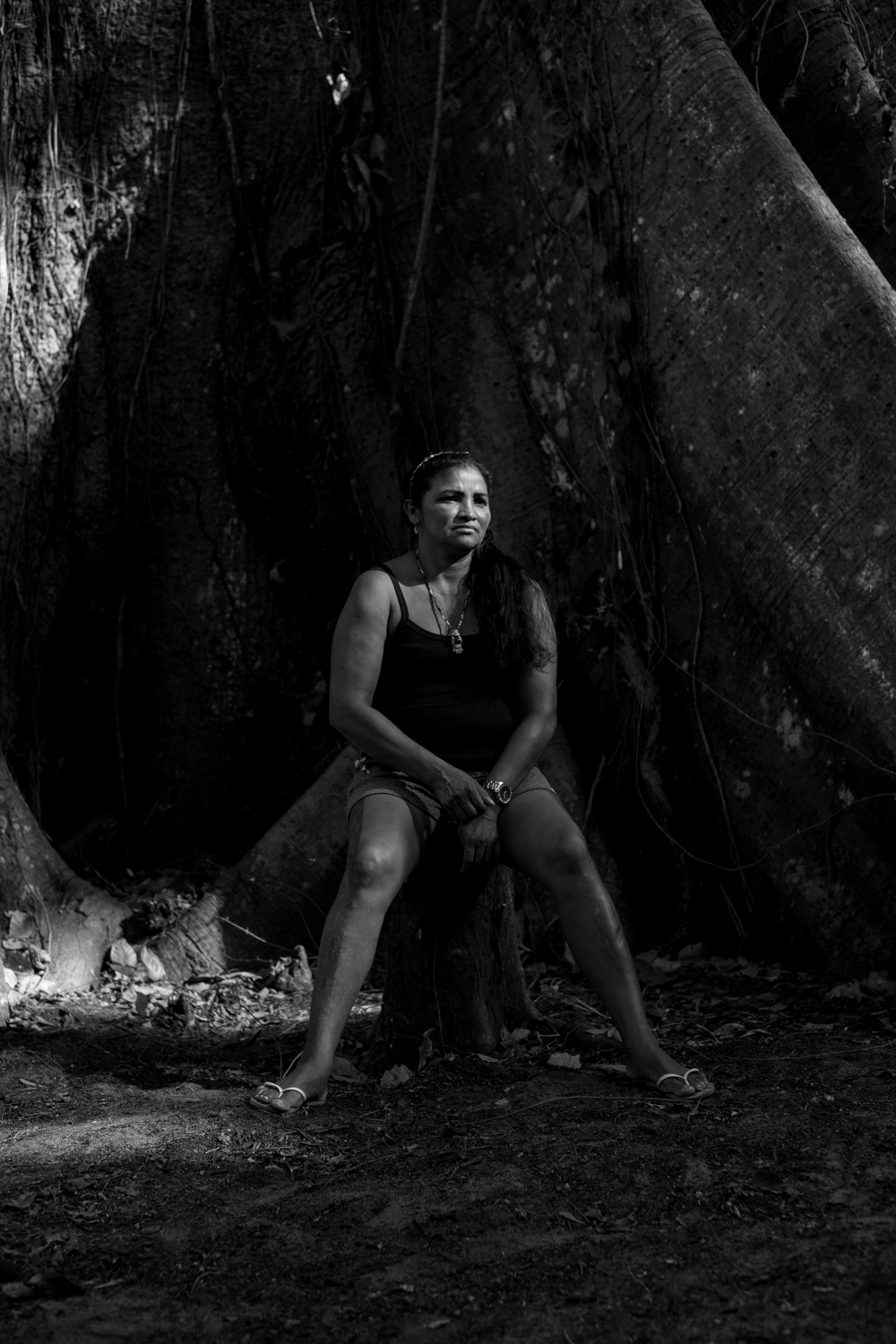
Portrait of a teacher beneath the samauma.
Courtesy: Alice Lima Nin (2022).

Portrait amidst the roots of the samauma.
Cortesía: Alice Lima Nin (2022).
However, it is important to remember that pedagogy is a broad practice, mobilized by various sectors and social actors, including a conflictive dimension within the pedagogical-educational field, configuring a historic and intense dispute over its uses and meanings. The pedagogies to which I refer here as “critical pedagogies” are those that configure open and concrete processes of world creation, that is, they refer to heterogeneous forms of creating and concretizing emancipatory languages and worlds of life. Paulo Freire was accurate: 1) no one educates anyone; 2) nor does anyone educate alone; 3) people educate each other and alongside the world.5 From this perspective, pedagogy is a set of insurgent knowledge and practices that traverse multiple dimensions of collective life, going far beyond school tools and methodologies.
For popular education, pedagogical action is necessarily a political action, which includes intentions and choices elaborated from specific places and situations. The modern capitalist separation between the pedagogical and the political allows the fact that educating is a political practice to be bypassed, and therefore also conflictive. But what is at stake? For Paulo Freire, a central part of this conflict is linked to the different elaborations and exchanges between what is understood by “humanity” and by “world2: “There cannot be a pedagogical theory, which implies the purposes and means of educational action, that is exempt from a concept of man [humanity] and of the world. There is, in this sense, no neutral education.”6 We could say, therefore, that pedagogical practices seek at the same time to accommodate and to provoke worlds, as well as to accommodate and to position humanities.
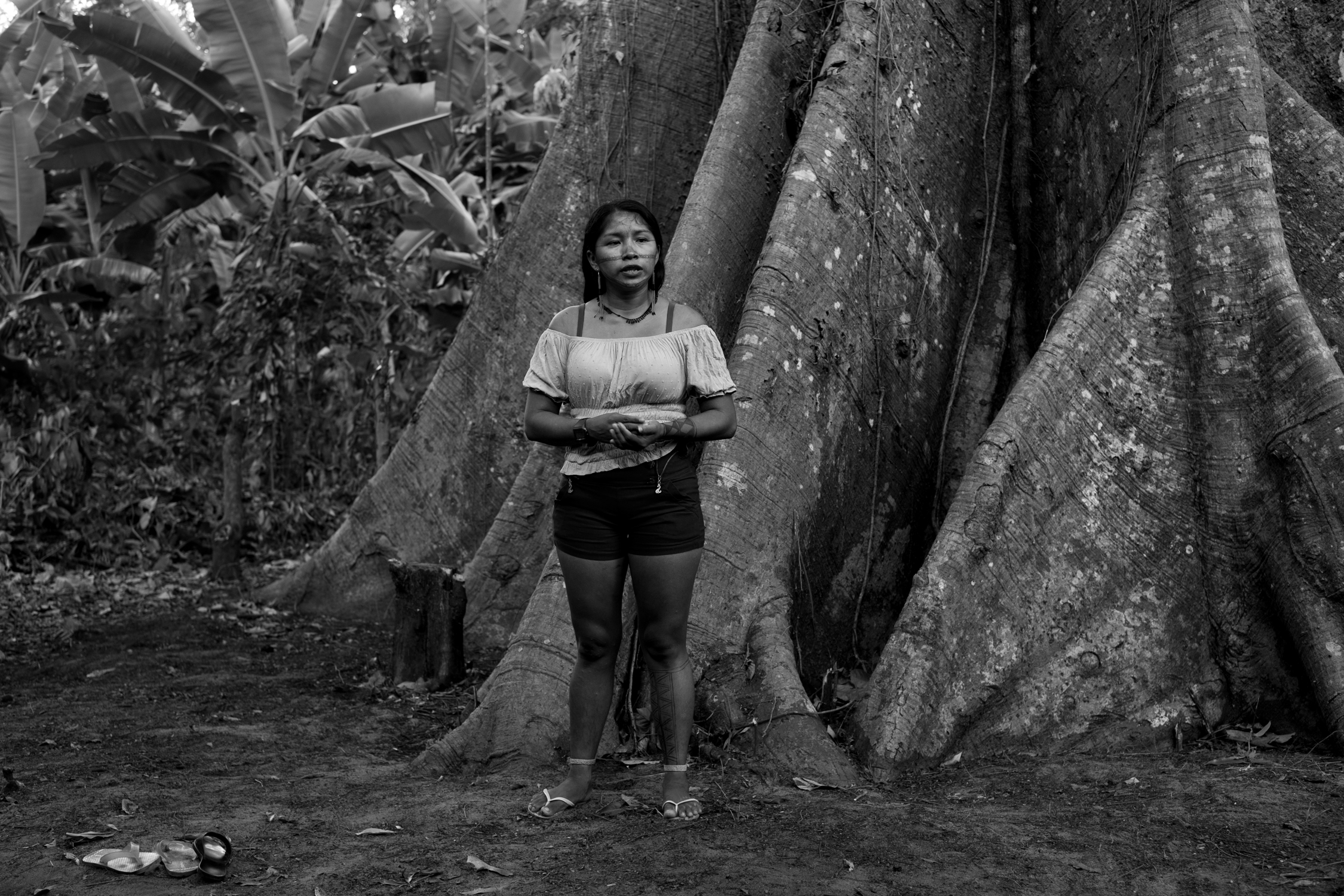
Member of a Munduruku audiovisual collective between the roots of the samauma, during the Tupinambá Youth Encounter of the lower Tapajós.
Courtesy: Alice Lima Nin (2022).

Amid the roots of the samaúma.
Courtesy: Alice Lima Nin (2022).
Conjuring Memories in Anumã
The hot days on the Tapajós seem to extend more each day, so the debate about where to meet for the workshop began mainly around this issue, and those accustomed to living in the heat know that shade and wind are essential elements to endure any hot outdoor stay. Right in front of the community school of Anumã lives a tree that in the afternoon provides ample and delicious shade, so the educators decided on this place for the activity without thinking twice. The year was 2022 and I was traveling through the communities of the lower Tapajós river with the education team of the NGO Saúde e Alegria,7 following a project on early childhood entitled "Crianças com Saúde e Alegria," carried out in five communities of the Tapajós Arapiuns Extractive Reserve.
The workshop in the Anumã community was conducted by the NGO's education team, coordinated by Fábio Pena, composed of Ananda Pacheco, Ádma Guimães, and Elis Lucien. The activity took place in collaboration with the community school, called Escola Santa Rita de Cássia, and its workers, students, mothers, and fathers. I take this workshop as a departing point because it made me rethink the transformative power of memories, what Elia Méndez García calls "the power of remembering,"8 which leads us to the transgressive force that pedagogy can assume from the collective exercise of sharing memories.
Paying attention to the uses of memory as an insurgent and provocative practice of the capitalist-patriarchal-colonial order seems to me an interesting point to think about how the emancipatory craft of defending the Tapajós River unfolds. The reflection arises from a central question: What happens when pedagogy claims memory as an insurgent practice?
This, in turn, arises from a dialogue with Verónica Gago's text on the work and political practice of Silvia Rivera Cusicanqui, mainly around "the vindication of memory as an insurgent practice." Recognizing that there are several ways to vindicate memory as an insurgent practice, I wonder: How does pedagogy do it?
When I was little, I spent a lot of time at my grandmother's house, and among many memories, there is one that I hold with special emotion, condensed in a piece of green fabric; but not just any green, but a particularly vivid and reliable green. That's how the fabric felt when my hands clung to it mercilessly as my grandmother dragged me at a thousand miles per hour across the floor of her small apartment on the slope of Costa Bastos, leading to the Santa Teresa neighborhood, in Rio de Janeiro. It was a wooden floored apartment with a narrow kitchen, where my grandmother cooked beer chicken on weekends. There were many plants and a large aluminum window through which the clock of the Central, an emblematic building of the city of Rio de Janeiro, could be seen.
In this apartment, I learned to fly: the first and only time I flew in my life was from the bedroom to the living room, slowly crossing the hallway and landing with difficulty next to the armchair, interrupting my grandmother's concentration, who always read the news in the mornings. She learned to read on her own, with the newspapers from the street vendors of Rio de Janeiro, after migrating from Pernambuco to this wonderful city. She always told me that's why she cultivated a great passion for those pages filled with small black and white letters, which after some time of handling stained her fingertips with their contagious black ink.
This was the memory I shared at the workshop in Anumã, which began with children and adults drawing an element that marked our childhood on a piece of paper, and then sharing with everyone the reason for that drawing, and what it meant to us. I drew the green fabric that my grandmother turned into a roller coaster. In the rest of the group there were all sorts of things: cats, trees, canoes, and many other bewitching entities accompanying childhood. Narratives about ourselves emerged focused on the sensitive and political construction of a "we," so before we realized it, each one was already telling a little about themselves far beyond the roles we played in the rigid work structures of "teacher," "student," "employee," or even "mother," within one institution or another, be it the school, the NGO, or the family.
The ability of memory to reorganize experience through collective practice is very powerful. It is impressive how much strength emotions can acquire when they are conjured as producers of legitimate knowledge, recognizing their epistemic importance for the circulation of knowledge and learning processes. So emotions and memory emerge as important territories for these pedagogies, as they recognize other languages of knowledge that escape modern separations of knowledge, making them vulnerable. Territories such as the body, emotions, desires, memories, dreams, among many others, move the Cartesian structures of knowledge, calling us to the exercise of "looking with our whole bodies."10
At a certain moment in the workshop in Anumã, the educators proposed that we write down on some pieces of paper another important memory from our childhood, this time anonymously. After a while of writing, we gathered all the pieces of paper and started reading together what they told us. There was one about a child who once managed to catch a boto;11 the adult who wrote it identified himself and commented that the dolphins no longer approached the community as before, when he was a child. In the shared childhood memories, there were many memories related to the river: going by canoe to study in the community, learning to paddle to help the parents, learning to fish, dreaming of a rabeta12 to be able to travel along the river without having to paddle so much, among many others.
The river that emerged from the memories was at the same time a path and a mystery, visible and invisible, a place to play and to meet the encantado (enchanted). It materialized in many ways in the memories, but never as a resource for capital. Memories, while revealing the relationships that give life to the river, also mapped out in which places that fabric is currently broken, and how it has been altered: the scarcity of fish, extreme droughts, the lack of control over the flooding pulse of the rivers, the garimpo and river contamination with mercury, the distance and death of animals, among many other examples. Thus, the shared memories open up and break with the linearity of time, conjuring up other possible worlds, and evidencing the (short, but devastating) trajectory of capitalist forms in life by the river.
Remembering, as Elia Méndez García tells us, brings a whole complexity of emotions and meanings conjured collectively with and from what is remembered. It is these shared emotions among those who remember that give meaning and strength to what is remembered. The act of remembering together mobilizes the complexity of the "mixed times"13 of life through a collective exercise of giving meaning to the differences and contrasts between these different temporalities and emotions. That is, this act of giving meaning to events in the present time necessarily implies displacing, disordering, and reorganizing the structures and temporalities of life. Therefore, while we were conjuring up memories, everything was moving.
Making Thought Vulnerable and Fragile
But why was everything moving? Why does the act of remembering feel so powerful? According to Méndez García, the power of remembering opens up the possibility of reorganizing and resignifying collective experience. These are moments where the transformation of the world as we know it is allowed from the circularity between reason-emotion, renewing the links between both, and subverting the modern-colonial order. From that perspective, remembering constitutes a knowledge, and a knowledge that can become an insurgent and rebellious practice.14
It seems to me that an important part of this process of reorganization and transformation of experience from memory is linked to making thought vulnerable, or fragile. The power of remembering produces a state of vulnerability and collective openness that allows things to be moved, causing "thought to enter a state of rebellion."15 Or, in other words, allowing a movement of reorganization and transformation of the rigid structure of the capitalist order.
This making thought vulnerable is important for emancipatory pedagogical practices because in them we learn when we become vulnerable together, connecting knowledge and openings in our seeking practices.
Education and pedagogy then become places that cultivate that vulnerability and collective openness as starting points for putting thought into a state of rebellion, that is, as starting points for pedagogy to transform into emancipatory practice.
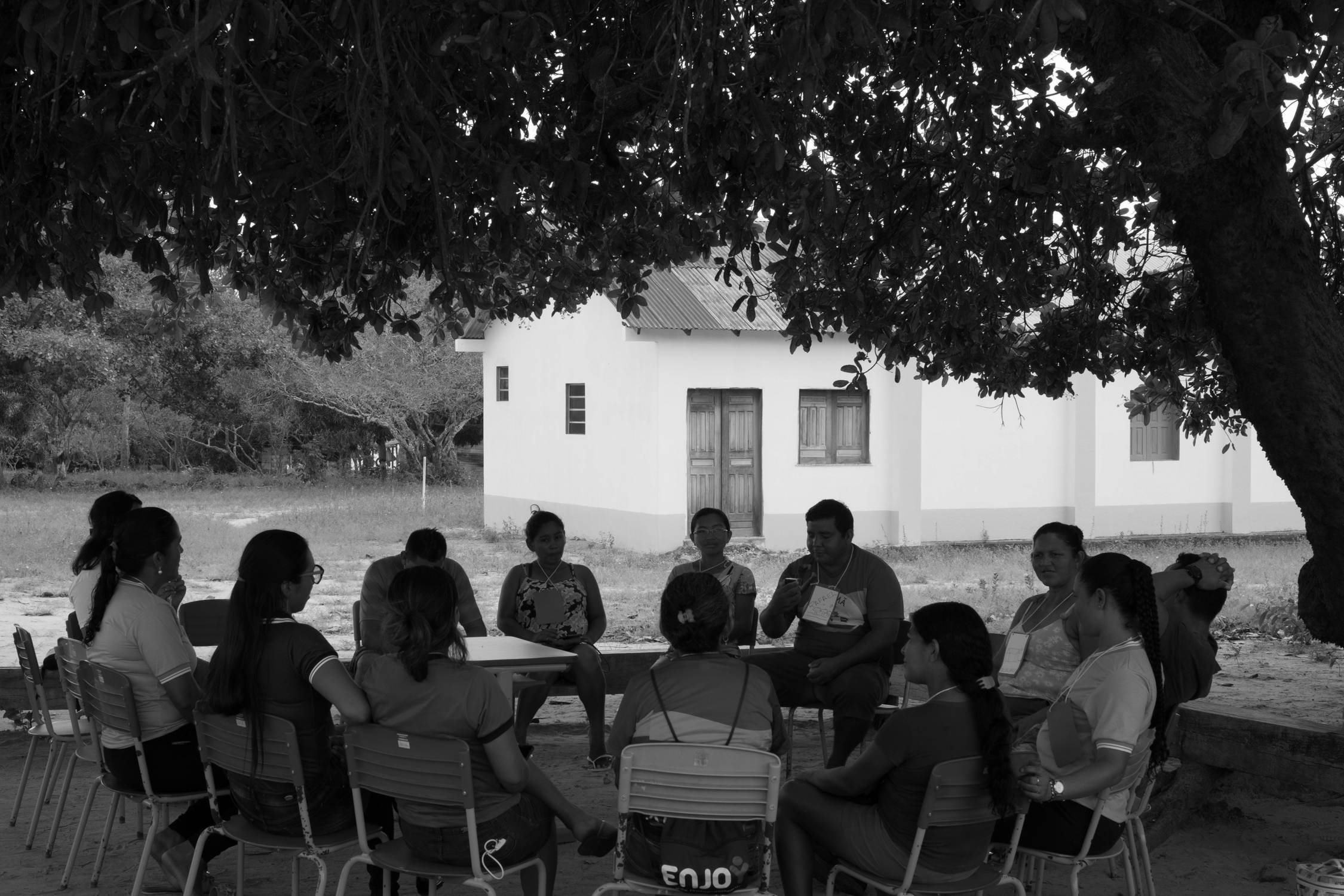
Conveying memories in Anumã.
Courtesy: Alice Lima Nin (2022).

Community hall.
Courtesy: Alice Lima Nin (2022).

"Welcome to the Anumã community."
Courtesy: Alice Lima Nin (2022).
In Anumã, by sharing memories of our childhoods, we ended up conjuring up a Tapajós River very different from the one created by capitalism. A river that is constituted by the multispecific relationships and cosmopolitical networks that give life to its waters, among humans, enchanted beings, and fish. We conjured up a river that exists from the children's games and the proximity of botos; a river of a very different "ancestral future"15 from that of soy ships and garimpo rafts. In these situations, pedagogy animates political languages that cut across diverse corporealities, marking a way of doing and a form of collectivity that challenges and tensions capitalist mediations. The power of remembering, therefore, becomes an important tool of the common, allowing, despite the brutal presence of a river contaminated with mercury and all kinds of inputs from agribusiness, insurgent and rebellious forms of life to be recreated against the capitalist metabolism.
